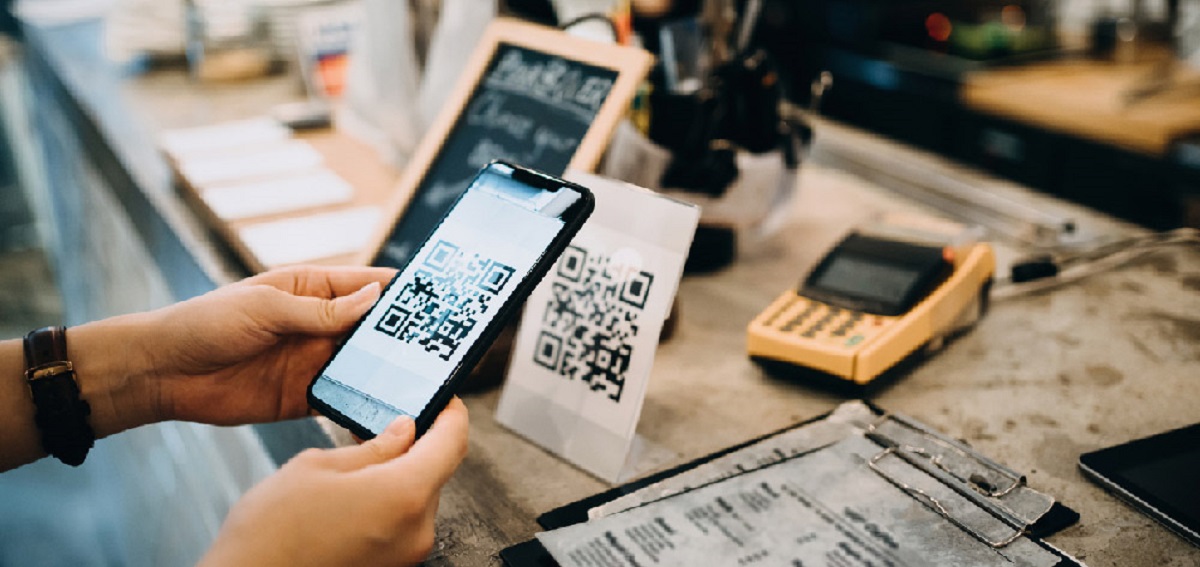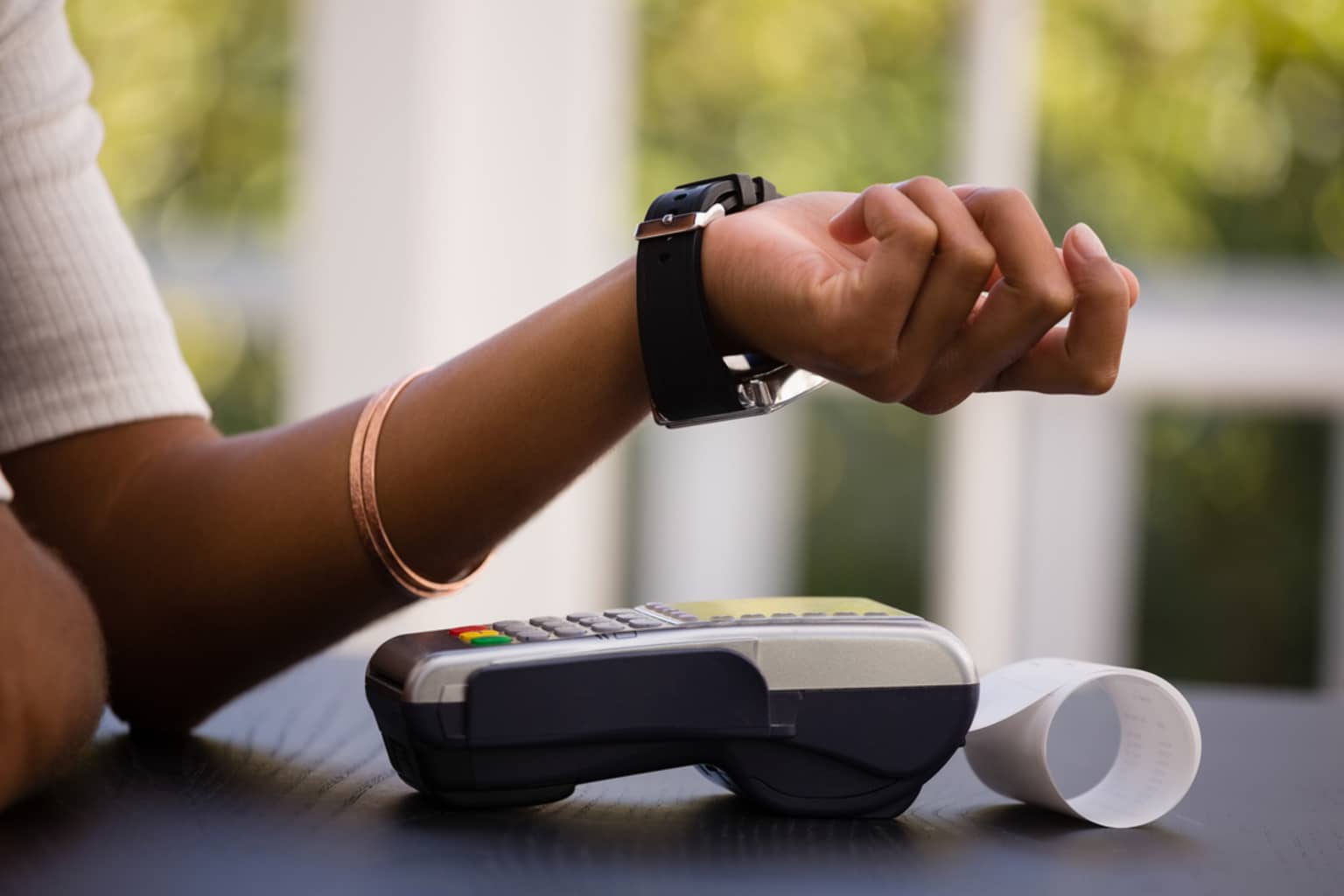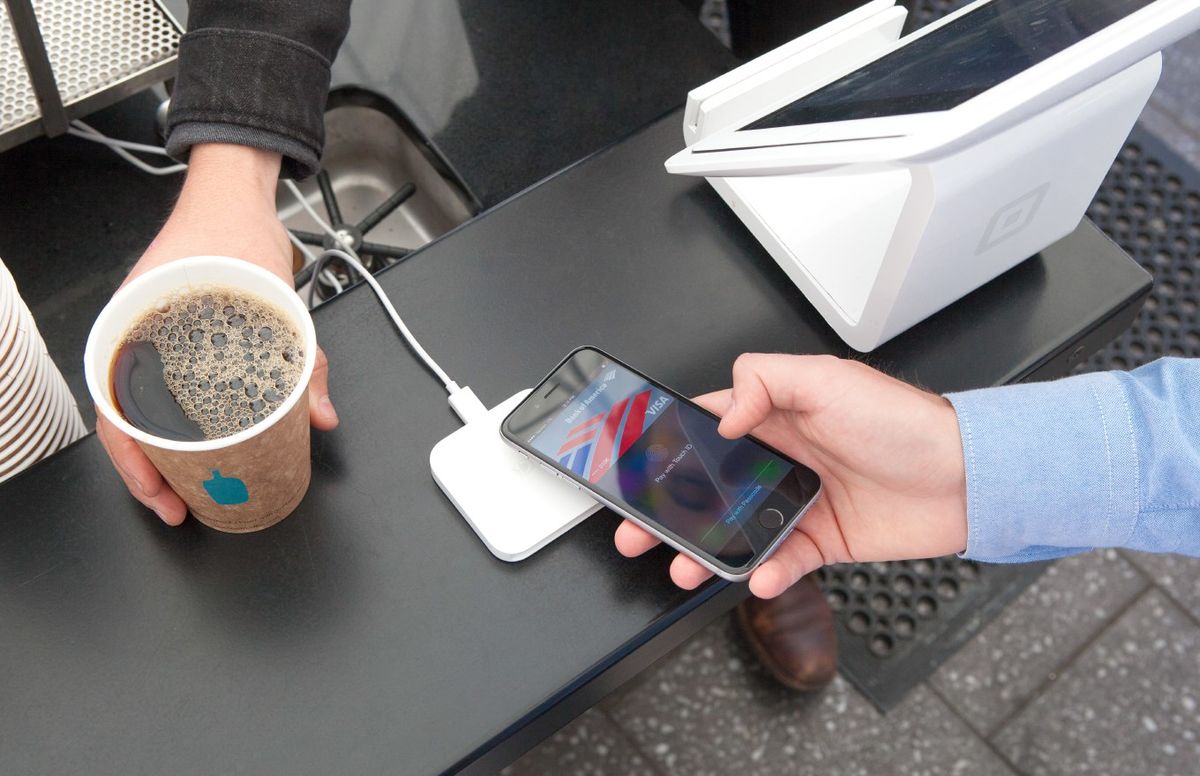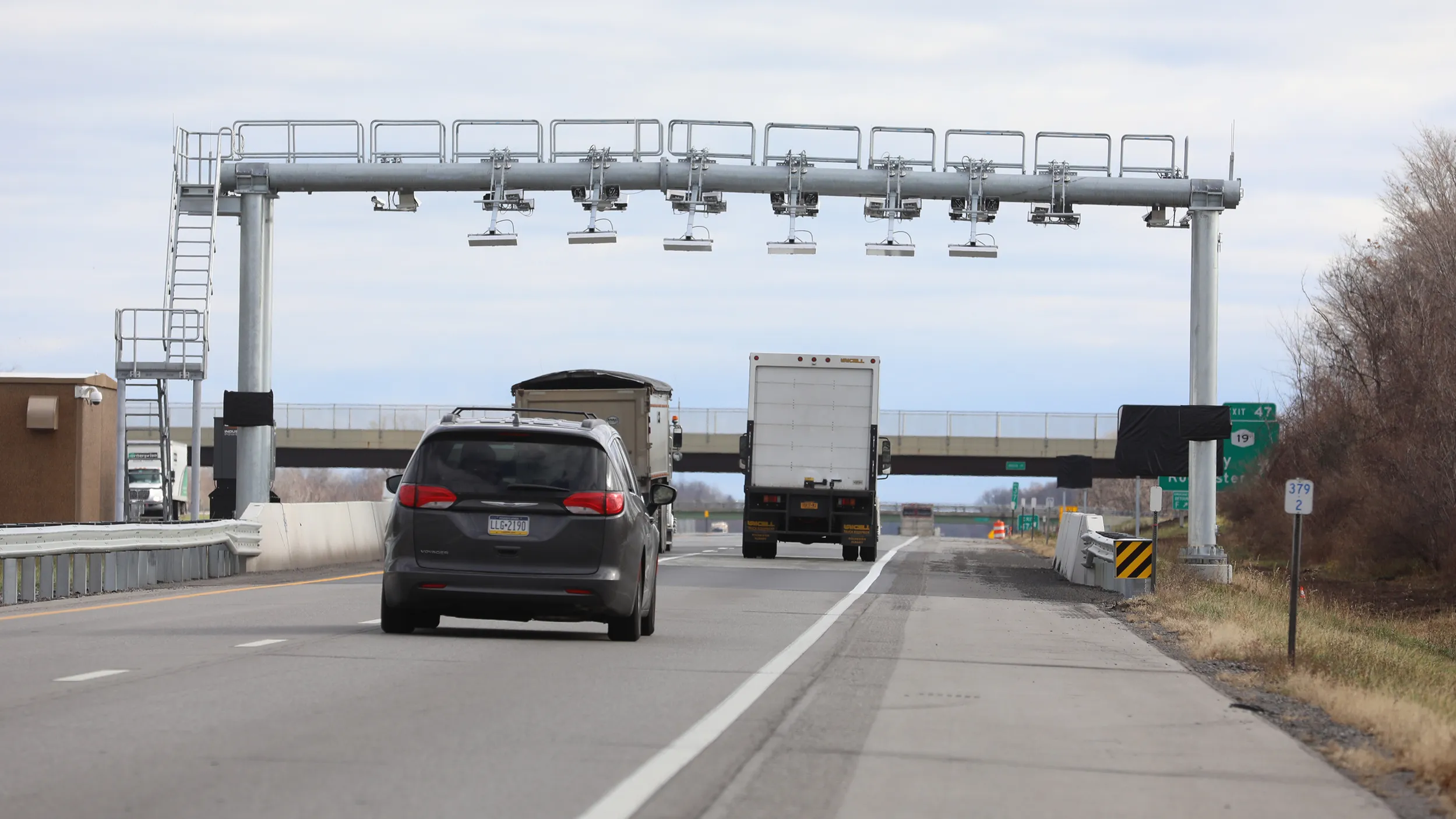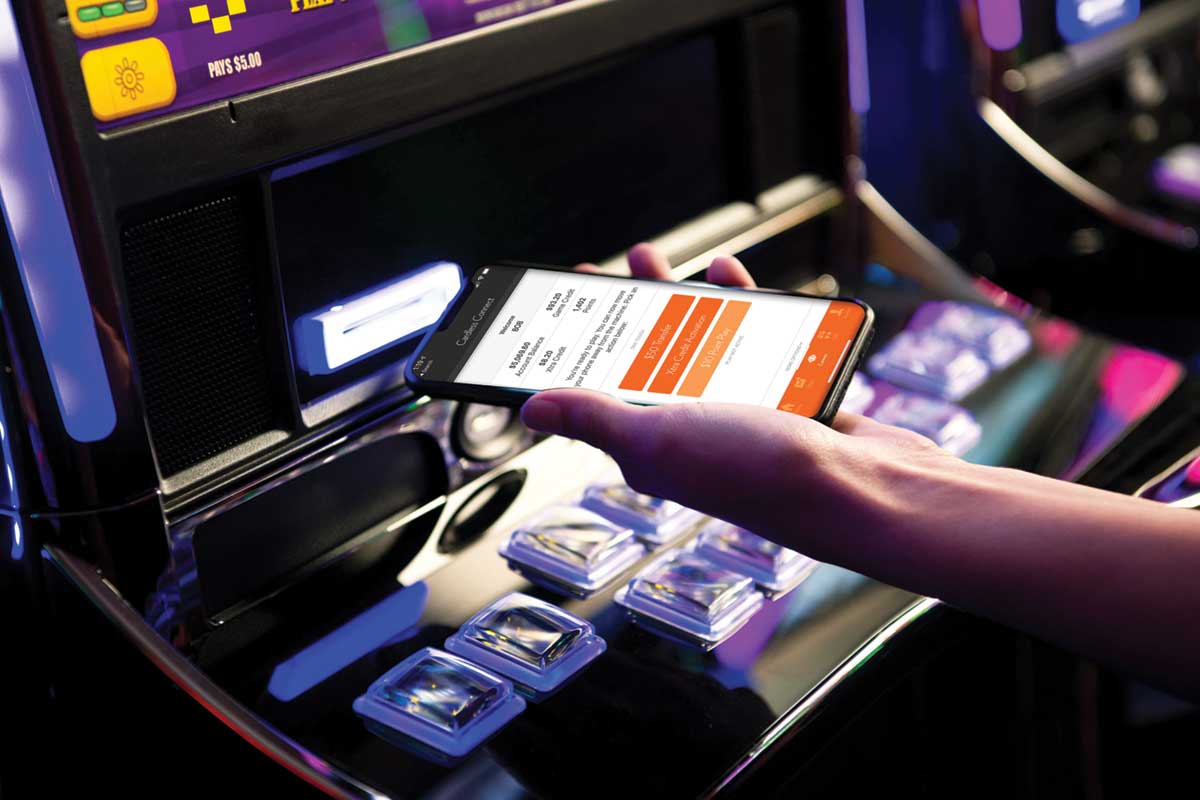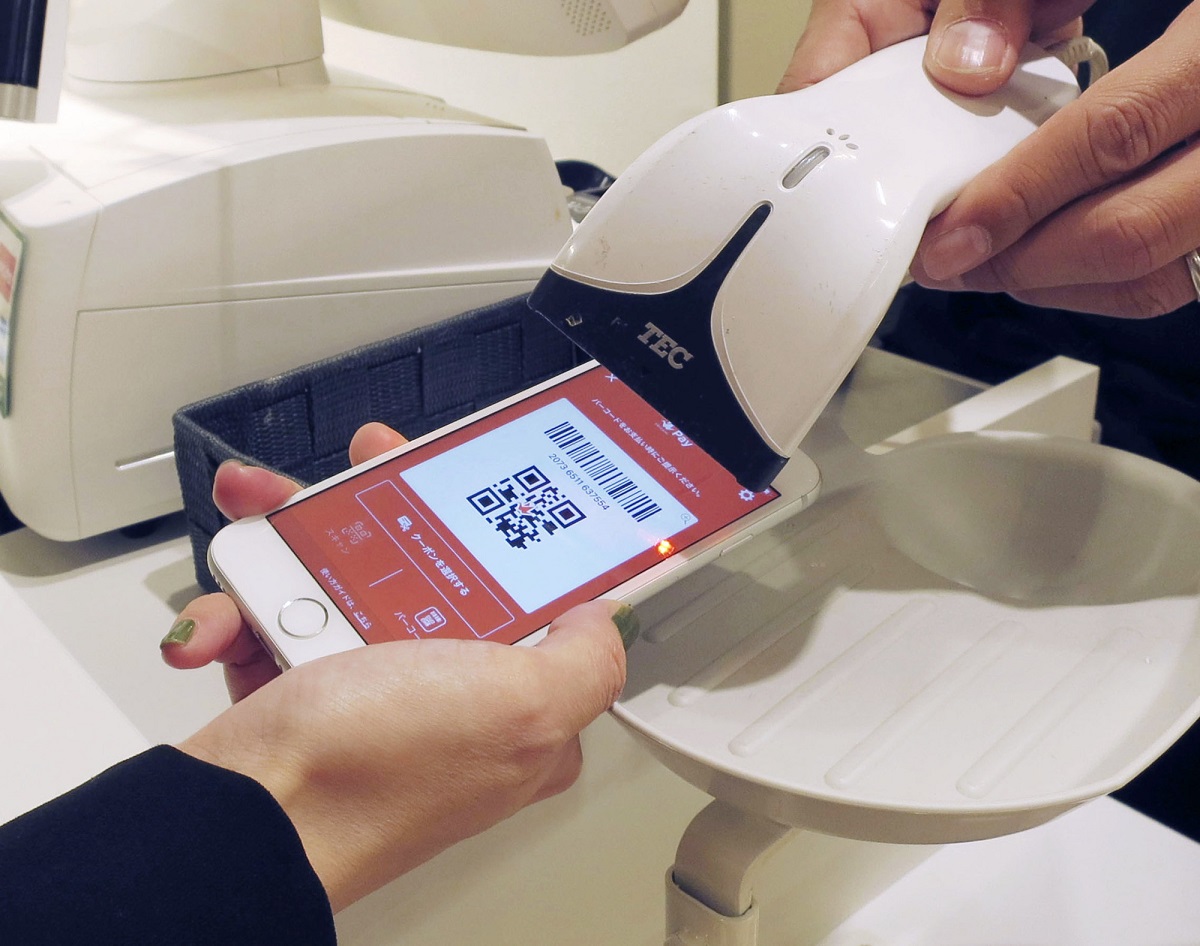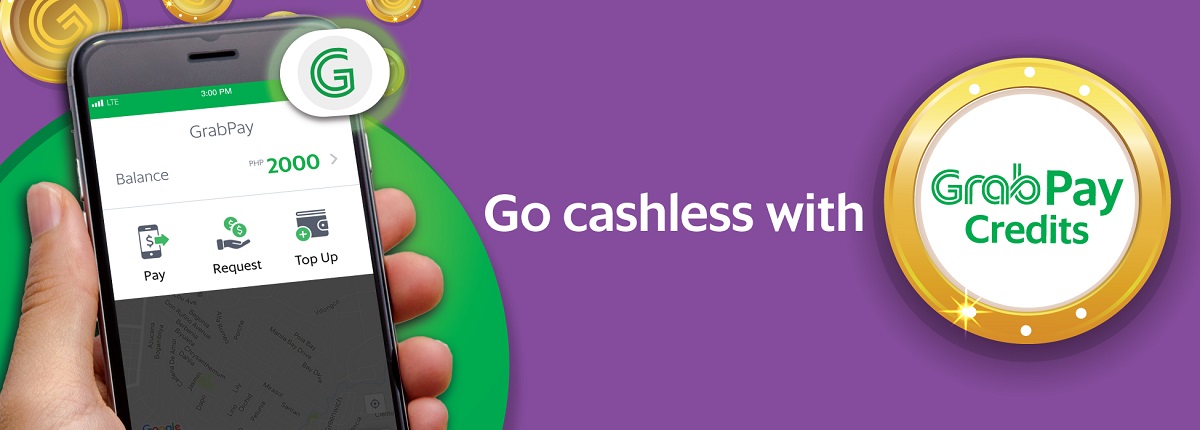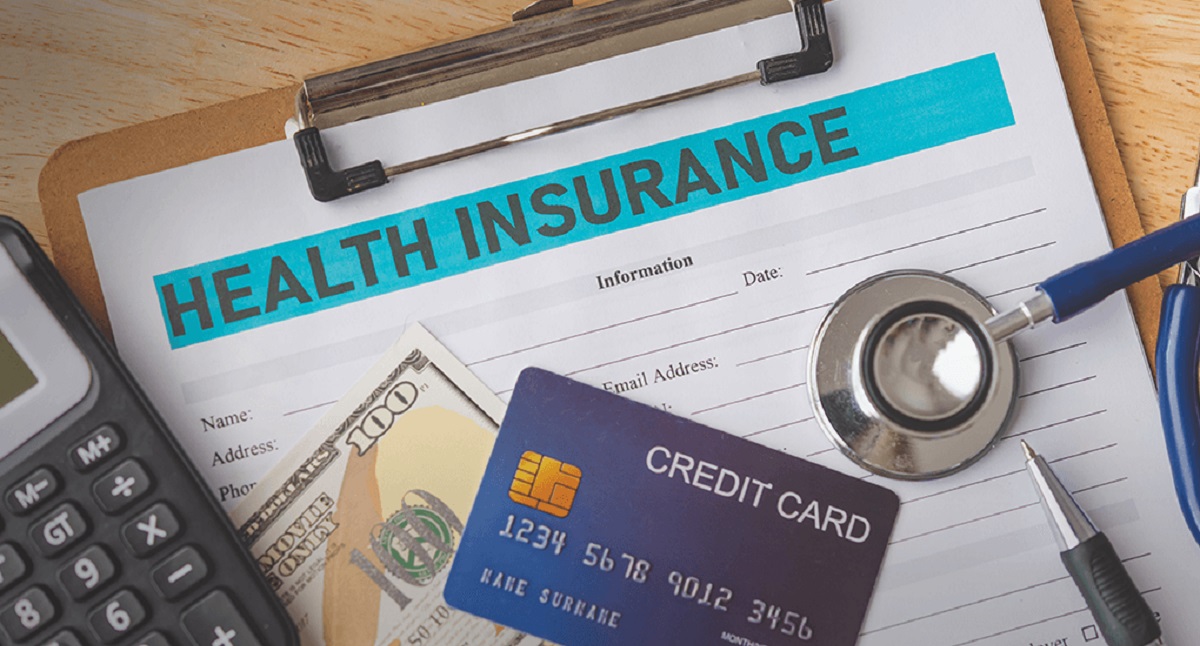Introduction
Welcome to the digital age, where cash is no longer king. With the rise of technology and the increasing popularity of online shopping, cashless payment options have become more prevalent than ever. Today, people have a multitude of ways to make transactions without the need for physical currency.
Cashless payment refers to any method of payment that does not involve the exchange of cash. Instead, these transactions are conducted electronically using a variety of digital devices and platforms. From credit and debit cards to mobile payments and QR codes, the options for cashless payment are vast and continuously evolving.
This article will explore the different types of cashless payments available, highlight their benefits, and discuss the challenges that come with these digital transactions.
As our world becomes increasingly connected, it is crucial to understand cashless payment methods and their impact on our daily lives. Whether you are a business owner looking to offer seamless payment options to your customers or an individual seeking convenience and security, this article will provide valuable insights into the world of cashless transactions.
What Is Cashless Payment?
Cashless payment, also known as electronic payment or digital payment, refers to any method of making transactions without the use of physical cash. Instead, these transactions are conducted electronically using various online platforms, digital devices, and financial technologies.
Traditionally, cash has been the primary means of payment for goods and services. However, as technology advances and digitalization becomes more prevalent, cashless payment options have gained popularity. This shift towards electronic payments is driven by convenience, efficiency, and enhanced security.
One of the most common forms of cashless payment is through debit cards. Debit cards are linked to an individual’s bank account, allowing them to make purchases by electronically transferring funds from their account to the merchant’s account. This method provides a convenient and secure way to make transactions without the need for physical cash.
Credit cards are another widely used form of cashless payment. Unlike debit cards, which deduct funds directly from a bank account, credit cards allow individuals to make purchases on credit. The credit card company extends a line of credit, and the individual is required to pay back the borrowed funds at a later date, often with interest.
Mobile payments have also emerged as a popular cashless payment method. With the proliferation of smartphones, individuals can now make payments through mobile apps or digital wallets. These apps securely store payment information, allowing users to make purchases with a simple tap or scan of their smartphone.
QR code payments have gained traction in recent years. Merchants generate a unique QR code that customers can scan using their smartphones to initiate a payment. This method is simple, efficient, and widely accepted, making it a convenient option for cashless transactions.
Overall, cashless payment is revolutionizing the way we conduct transactions. It offers a convenient, secure, and efficient alternative to cash and provides individuals and businesses with a wide range of options to suit their needs and preferences.
Types of Cashless Payments
As technology continues to advance, the world of cashless payments offers a plethora of options to choose from. Here are four common types of cashless payments:
1. Debit cards:
Debit cards are a widely used cashless payment method. These cards are linked to a person’s bank account and allow them to make purchases by transferring funds directly from their account to the merchant’s account. Debit cards can be used at point-of-sale terminals, online websites, and even for cash withdrawals from ATMs.
2. Credit cards:
Credit cards are another popular form of cashless payment. Unlike debit cards that deduct funds directly from a bank account, credit cards offer a line of credit to the cardholder. When making a purchase, the cardholder borrows funds from the credit card company and is required to repay the borrowed amount, often with interest, at a later specified date.
3. Mobile payments:
Mobile payments have gained significant traction in recent years. With the help of smartphones, individuals can now make payments using mobile apps or digital wallets. These apps securely store payment information, allowing users to make purchases by simply tapping or scanning their smartphones at payment terminals.
4. QR code payments:
QR code payments have become increasingly popular, especially in retail environments. Merchants generate a unique QR code that customers can scan using their smartphones. The QR code contains payment information, and upon scanning, the payment is initiated and processed. This method is quick, secure, and convenient, eliminating the need for physical cards or cash.
These are just a few examples of cashless payment options available today. Other methods include contactless cards, digital wallets, and even cryptocurrency payments. The variety of options ensures that individuals and businesses can find a cashless payment method that suits their needs, preferences, and technological capabilities.
Regardless of the specific method used, cashless payments offer enhanced convenience, security, and flexibility. They not only streamline transactions but also provide valuable data and transaction history that can assist in budgeting and financial planning.
Now that we have explored the types of cashless payments available, let’s take a look at the numerous benefits they provide.
Debit cards
Debit cards are a popular and widely used form of cashless payment. They offer a convenient and secure way for individuals to make transactions without the need for physical cash. Here’s how debit cards work:
When someone uses a debit card for a purchase, the funds are directly transferred from their linked bank account to the merchant’s account. This eliminates the need to carry large amounts of cash or write paper checks. Debit cards can be used at various point-of-sale terminals, online websites, and even for cash withdrawals at ATMs.
Debit cards provide several advantages. First and foremost, they offer convenience. With a debit card, individuals can make seamless and instant transactions without the hassle of counting out cash or waiting for change. This makes purchasing goods and services quick and efficient, saving time for both customers and merchants.
In addition to convenience, debit cards offer enhanced security. Unlike cash, which can be easily lost or stolen, debit cards require a PIN (Personal Identification Number) for authorization. This adds an extra layer of protection, reducing the risk of unauthorized transactions. Furthermore, most financial institutions provide fraud protection for debit card holders, limiting their liability in case of fraudulent activity.
Another benefit of using debit cards is that they provide individuals with a transparent record of their spending. Through online banking or monthly statements, cardholders can easily track and monitor their transactions. This allows for better budgeting and financial planning, as individuals can analyze their spending patterns and make adjustments if necessary.
Debit cards also offer an added level of financial discipline. Since the funds are directly deducted from the linked bank account, users are limited to spending what they have. This can help individuals avoid accumulating credit card debt or overspending beyond their means.
Furthermore, debit cards are widely accepted both domestically and internationally. They can be used for in-store purchases, online transactions, and cash withdrawals at ATMs worldwide. This versatility makes debit cards a convenient payment option for travelers and individuals who frequently make purchases across borders.
Overall, debit cards provide a secure, convenient, and efficient cashless payment option. Whether used for everyday purchases or travel expenses, debit cards offer ease and flexibility while helping individuals stay financially responsible.
Credit cards
Credit cards have revolutionized the way people make purchases and manage their finances. Unlike debit cards, which deduct funds directly from a bank account, credit cards offer a line of credit to cardholders. Here’s what you need to know about credit cards and their benefits:
When individuals use a credit card for a purchase, they are essentially borrowing money from the credit card company. The cardholder is required to repay the borrowed amount, often with interest, at a later specified date. Credit cards provide individuals with a flexible and convenient way to make purchases, whether in-person or online.
One of the key advantages of using credit cards is the ability to make purchases even when funds are unavailable at the time. This is particularly useful for more significant purchases or unexpected expenses. Instead of immediately draining their bank account, individuals can use their credit card to cover the cost and repay it over time.
Credit cards offer valuable financial protections and benefits. Many credit card companies provide rewards programs, such as cashback or travel points, allowing cardholders to earn benefits for their spending. Additionally, credit cards often come with various insurance coverage, such as purchase protection, extended warranties, and travel insurance, providing extra peace of mind when making large purchases or traveling.
Another advantage of using credit cards is the ability to build credit history. Responsible use and timely repayments can positively impact an individual’s credit score, which plays a crucial role in securing future loans or qualifying for better interest rates. Building good credit through credit card usage can open doors to future financial opportunities.
Credit cards also offer added security. In case of fraudulent activity or unauthorized charges, credit card companies typically provide robust fraud protection. Cardholders are not held responsible for fraudulent transactions, and most credit card companies have systems in place to detect suspicious activity and notify users promptly.
It’s important to note that while credit cards offer numerous benefits, they also come with certain risks. It’s crucial for individuals to use credit cards responsibly and avoid accumulating excessive debt. Interest rates on unpaid balances can be high, making it essential to pay off credit card bills in full or make timely repayments to minimize interest charges.
Overall, credit cards provide a convenient and flexible cashless payment option, allowing individuals to make purchases now and repay them later. With proper usage and responsible repayment, credit cards can be a valuable tool for managing finances and building credit history.
Mobile payments
Mobile payments have become increasingly popular in recent years, thanks to the widespread use of smartphones and the convenience they offer. With just a few taps on their mobile devices, individuals can make seamless cashless transactions. Here’s what you need to know about mobile payments:
Mobile payments refer to transactions made using mobile applications or digital wallets. These apps securely store payment information, such as credit card details or bank account details, allowing users to make purchases by simply tapping or scanning their smartphones at payment terminals.
One of the key benefits of mobile payments is convenience. Instead of carrying numerous physical cards or cash, individuals can store multiple payment methods in a single mobile app. Whether it’s a credit card, debit card, or even gift cards, all the necessary payment information is readily accessible through the app, making transactions quick and hassle-free.
Mobile payments offer enhanced security compared to traditional payment methods. Payment information stored in mobile apps is encrypted and protected by multiple layers of security measures. Additionally, many mobile payment apps employ biometric authentication, such as fingerprint or facial recognition, adding an extra layer of security to the transaction process.
Another advantage of mobile payments is the ability to track and manage expenses easily. Most mobile payment apps provide transaction history and spending analytics, allowing users to monitor and categorize their spending. This feature can be particularly helpful for budgeting purposes or tracking business expenses.
Mobile payments also enable users to take advantage of loyalty and rewards programs. Many mobile payment apps allow individuals to link their accounts to various reward programs, such as cashback or loyalty points. This means that individuals can earn rewards or discounts for their purchases, making mobile payments not only convenient but also financially advantageous.
Furthermore, mobile payments have transformed person-to-person transactions. Instead of relying on cash or checks, individuals can use mobile payment apps to send money to friends, family members, or businesses with just a few taps. This eliminates the need for physical exchange and provides a convenient and secure way to transfer funds.
Mobile payments have also seen a surge in popularity due to their widespread acceptance. Many businesses, from small local shops to large retailers, have embraced mobile payment technologies and offer NFC (Near Field Communication) terminals that allow customers to make contactless payments. This makes mobile payments a convenient option for everyday purchases, whether it’s buying groceries, dining out, or shopping online.
Overall, mobile payments have revolutionized the way we make transactions. With their convenience, security, and ability to track expenses, mobile payment apps have become an integral part of the cashless payment ecosystem.
QR code payments
QR code payments have gained significant popularity as a cashless payment method in recent years. This convenient and secure technology enables individuals to make transactions by scanning unique QR codes using their smartphones. Here’s how QR code payments work and why they are becoming increasingly prevalent:
A QR code, short for Quick Response code, is a two-dimensional barcode that can be scanned using a smartphone camera or a dedicated QR code scanning app. Merchants generate a unique QR code that contains their payment information, such as the transaction amount and recipient details.
When making a payment, customers simply open their mobile payment app, select the option to scan a QR code, and point their smartphone camera towards the merchant’s QR code. The app decodes the QR code, retrieves the payment details, and enables the customer to verify and authorize the transaction.
QR code payments offer several advantages. First, they provide a contactless and convenient payment method. With just a simple scan, individuals can complete transactions in seconds, eliminating the need to handle physical cash or cards. This makes QR code payments ideal for crowded environments or situations where speed and efficiency are crucial.
Furthermore, QR code payments are highly secure. Each transaction has a unique QR code, preventing any chance of replication or unauthorized use. Additionally, most mobile payment apps employ encryption and authentication measures to ensure the security of the payment information transmitted during the transaction.
QR code payments also benefit businesses, especially small and medium-sized enterprises (SMEs), as they eliminate the need for expensive point-of-sale terminals. Merchants can easily generate and display QR codes using a smartphone or a QR code generator. This significantly reduces operational costs and allows businesses of all sizes to accept cashless payments.
Another advantage of QR code payments is their versatility and widespread acceptance. QR code payment systems are increasingly adopted by retailers, restaurants, and even street vendors. This widespread acceptance means that customers can use QR code payments for various transactions, whether it’s shopping at a local store, making donations, or purchasing tickets for events.
Moreover, QR code payments facilitate better tracking and record-keeping. Both merchants and customers can easily access transaction history and receipts, providing transparency and making it easier for accounting or budgeting purposes. This digital record-keeping is more efficient than manual reconciliation of cash transactions.
Overall, QR code payments offer a convenient, secure, and cost-effective cashless payment option. With their simplicity and versatility, they have rapidly gained popularity as a preferred method of payment, revolutionizing the way we conduct transactions in both online and offline settings.
Benefits of Cashless Payment
Cashless payment methods have revolutionized the way we conduct transactions, bringing a multitude of benefits to individuals and businesses alike. Here are some key advantages of embracing cashless payments:
1. Convenience:
Cashless payments offer unparalleled convenience. With just a smartphone, debit or credit card, or other digital payment methods, individuals can make transactions anytime, anywhere. There is no need to carry physical cash or worry about making exact change. Cashless payments streamline the purchasing process, making it quicker and more efficient for both customers and businesses.
2. Enhanced security:
Traditional cash transactions come with inherent security risks, such as theft or loss. Cashless payments provide an extra layer of security. Encryption, authentication protocols, and biometric features in mobile payment apps protect sensitive payment information. Additionally, digital payment methods offer fraud protection and dispute resolution options, ensuring the security and peace of mind for both consumers and merchants.
3. Improved budgeting and tracking:
Cashless payments offer individuals the ability to track their spending and manage their finances more effectively. Electronic transactions provide detailed records of purchases, making it easier to analyze expenses, identify patterns, and create budgets. Many digital payment platforms also offer tools and features for expense categorization and reporting, empowering individuals to make informed financial decisions.
4. Contactless payments during COVID-19:
In light of the COVID-19 pandemic, cashless payments have become crucial for minimizing physical contact. Contactless payment methods, such as mobile payments and QR code payments, eliminate the need for card insertion or handling cash. This contributes to reducing the potential spread of viruses and provides a safer, touch-free transaction experience for both customers and employees.
5. Cost savings and efficiency for businesses:
For businesses, cashless payments offer significant cost savings and increased efficiency. With less reliance on cash handling and manual reconciliation, businesses can reduce the risks of theft and human error. Digital transactions also streamline accounting processes and reduce administrative tasks associated with handling and depositing physical cash. Additionally, accepting cashless payments can attract tech-savvy customers and enhance overall customer satisfaction.
6. Financial inclusion:
Cashless payments have the potential to foster financial inclusion by providing access to electronic transactions for individuals who may not have access to traditional banking services. Mobile payment apps and digital wallets can serve as mobile banking platforms, allowing people to send and receive money, make payments, and access financial services, even without a bank account.
The benefits of cashless payments extend beyond convenience and security. They contribute to increased efficiency, financial transparency, and financial inclusion. As technology continues to evolve, cashless payments are likely to become even more prevalent, shaping the future of the payment landscape.
Convenience
One of the key advantages of cashless payments is the unparalleled convenience they offer to both individuals and businesses. Here are some key aspects of how cashless payments enhance convenience:
Seamless Transactions:
Cashless payments streamline the purchasing process, making it quick and efficient. With just a tap, a swipe, or a scan, transactions can be completed within seconds, eliminating the need to count and handle physical cash. This convenience is especially evident in retail settings, where long queues can be reduced, resulting in faster transaction times and improved customer satisfaction.
Online Shopping:
Cashless payments have transformed the landscape of online shopping. With digital payment methods, individuals can make purchases from the comfort of their homes, without the need to physically visit a store. The ability to securely save payment information within online platforms eliminates the need to enter card details repeatedly, simplifying the checkout process and reducing potential friction points.
Peer-to-Peer Payments:
Cashless payment platforms facilitate easy and instant peer-to-peer transactions. Splitting bills at a restaurant, reimbursing a friend, or contributing to a group gift can now be done seamlessly through mobile payment apps. This convenience eliminates the hassle of dealing with cash or writing checks, allowing individuals to quickly settle financial obligations with just a few taps on their smartphones.
Traveling Abroad:
Cashless payments are especially convenient for travelers. With the availability of international payment methods, individuals no longer need to carry large amounts of foreign currency or worry about exchange rates. By using cashless payment options such as credit cards or mobile wallets, travelers can make purchases and payments in local currencies, providing ease and eliminating the hassle of handling multiple currencies.
Automated Transactions:
Cashless payments enable automated transactions, such as recurring bill payments and subscription services. By linking payment methods to these services, individuals can set up automatic payments, ensuring bills and subscriptions are paid on time without the need for manual intervention. This convenience helps individuals stay on top of their financial obligations and avoids late payment fees.
Access to Funds Anytime, Anywhere:
With cashless payment methods, individuals have access to their funds anytime and anywhere. Whether through debit cards, mobile payment apps, or online platforms, individuals can make purchases, withdraw cash from ATMs, or transfer money with convenience and ease, even outside of traditional banking hours.
The convenience offered by cashless payments is transforming the way we transact, making it easier and more efficient to make purchases, send or receive money, and manage day-to-day financial transactions. As technology continues to evolve, we can expect further innovations that enhance the convenience of cashless payments, providing us with even greater ease and flexibility in our financial interactions.
Enhanced security
Cashless payments offer enhanced security compared to traditional cash transactions, providing individuals and businesses with increased peace of mind. Here are some key aspects of how cashless payments enhance security:
Fraud Protection:
Cashless payment methods come with built-in fraud protection measures. Credit card companies and payment processors employ advanced algorithms and systems to detect and prevent fraudulent transactions. In cases of unauthorized activity, individuals are typically not held liable for fraudulent charges, providing an additional layer of security and financial protection.
Secure Authentication:
Cashless payment methods often incorporate secure authentication mechanisms to prevent unauthorized access to payment information. Two-factor authentication, biometric recognition (such as fingerprint or facial recognition), and unique PIN codes are commonly used to ensure that only authorized individuals can initiate and complete transactions. These authentication features provide an extra layer of security beyond traditional signatures and IDs associated with cash transactions.
Encryption and Tokenization:
Cashless payment systems utilize encryption and tokenization techniques to protect sensitive payment information. When making a transaction, the payment details are securely encrypted, making it nearly impossible for hackers or unauthorized parties to access and decipher the information. Tokenization replaces sensitive data, such as credit card numbers, with randomly generated tokens that have no intrinsic value, further enhancing the security of the transaction.
Reduced Risk of Theft:
Carrying physical cash always comes with the risk of theft or loss. With cashless payments, the need to handle and carry cash is minimized, eliminating the risk of theft. Even if a mobile device or card is lost or stolen, most cashless payment systems provide options to suspend or disable the payment method, protecting individuals from unauthorized use.
Contactless Payments:
During the COVID-19 pandemic, contactless payments have gained significant popularity due to their enhanced security. Contactless methods, such as tap-to-pay or mobile payments, minimize physical contact with payment terminals, reducing the potential spread of viruses. The ability to make payments without physically handing over cards or cash adds an extra layer of safety to transactions.
Transaction Monitoring and Alerts:
Cashless payment systems often provide real-time transaction monitoring and alerts. Individuals can receive notifications via email, SMS, or mobile app notifications for any transactions made with their payment methods. This allows for quick identification of any unauthorized or suspicious activity, enabling individuals to take immediate action if needed.
Overall, cashless payments offer enhanced security features that protect individuals and businesses from fraud, theft, and unauthorized access to payment information. The adoption of secure encryption, advanced authentication methods, and transaction monitoring systems ensures that cashless payment methods provide a secure and reliable way to conduct financial transactions in today’s digital world.
Improved budgeting and tracking
Cashless payments provide individuals with the tools and capabilities to effectively manage their finances through improved budgeting and tracking. Here are some key aspects of how cashless payments enhance budgeting and tracking:
Transaction History:
Cashless payment methods generate detailed transaction records, providing individuals with a comprehensive history of their purchases and financial activities. This transaction history can be accessed through online banking portals, mobile banking apps, or payment platform accounts. The ability to review and analyze transaction history allows individuals to gain insights into their spending patterns, identify areas where they can cut expenses, and make better-informed financial choices.
Real-Time Monitoring:
Many cashless payment platforms offer real-time monitoring of transactions. Individuals can instantly view their recent purchases or transfers, enabling them to keep track of their current financial standings. Real-time monitoring helps individuals stay on top of their accounts, avoid overdrawing, and quickly detect any unauthorized transactions or discrepancies.
Budgeting Tools:
Some cashless payment platforms provide built-in budgeting tools that help individuals set financial goals, create budgets, and track their progress. These tools can categorize expenses, set spending limits, and provide visual representations of spending habits. By using these budgeting tools, individuals can take control of their finances, identify areas for improvement, and make adjustments to meet their financial goals.
Automated Expense Tracking:
Cashless payments facilitate automated expense tracking, as transactions are electronically recorded with detailed information, such as transaction amounts, dates, and merchant names. This automation reduces the need for manual tracking and receipt management. Individuals can simply review their transaction history to get a clear picture of their expenses, which is particularly helpful during tax season or financial audits.
Alerts and Notifications:
Cashless payment platforms often offer customizable alerts and notifications. Individuals can set up alerts to receive notifications for specific triggers, such as exceeding a certain spending limit or irregular transactions. These alerts serve as reminders, helping individuals stay vigilant about their spending habits and ensuring that they stay within their budgetary limits.
Integration with Financial Management Apps:
Cashless payment platforms can be seamlessly integrated with various financial management applications or personal finance software. This integration allows individuals to aggregate all their financial information in a single place, providing a holistic view of their financial health. Such integration enables better financial planning, smarter decision-making, and the ability to track progress towards financial goals.
By leveraging the budgeting and tracking capabilities offered by cashless payments, individuals can build good financial habits, gain insights into their spending behaviors, and take control of their financial well-being. The availability of detailed transaction records, real-time monitoring, automated tracking, and integration with financial management tools empower individuals to make informed financial decisions and work towards achieving their financial goals.
Contactless payments during COVID-19
The COVID-19 pandemic has highlighted the importance of contactless payments as a safer alternative to traditional payment methods. Here are some key aspects of how contactless payments have become essential during the pandemic:
Reduced Physical Contact:
Contactless payments minimize the need for physical contact between individuals, reducing the potential spread of viruses, including COVID-19. Unlike traditional payment methods that require handing over cash or physically inserting a card into a payment terminal, contactless payments enable individuals to make transactions by simply tapping, waving, or scanning their payment devices. This touch-free experience is crucial for promoting hygiene and social distancing measures in public spaces.
Health and Safety Measures:
Governments and health authorities around the world have emphasized the importance of avoiding physical contact and reducing the handling of cash. Contactless payments provide a safe and hygienic payment solution for both customers and employees. By minimizing the exchange of physical currency, contactless payments help protect individuals from potential exposure to the virus, providing an added layer of safety during these uncertain times.
Retail Acceptance and Adoption:
The COVID-19 pandemic has accelerated the acceptance and adoption of contactless payments by businesses worldwide. Retailers, restaurants, and other establishments have swiftly implemented contactless payment options to accommodate customer preferences and comply with health guidelines. Point-of-sale terminals equipped with near-field communication (NFC) technology enable customers to make purchases without physical contact, facilitating a safe and seamless payment experience.
Fast and Efficient Transactions:
Contactless payments drastically reduce transaction times, allowing for faster and more efficient checkouts. The ability to complete a payment with a single tap or wave of a payment device eliminates the need for cash handling, signature verifications, or PIN entries. This speed and efficiency benefit both customers and businesses, particularly during peak shopping periods or when adhering to timed entry protocols in stores or establishments.
Online and Remote Payments:
Contactless payments extend beyond in-person transactions and are equally applicable to e-commerce and remote payments. With online platforms and digital wallets, individuals can make secure contactless payments for online purchases, food deliveries, or digital services. This has become especially relevant during the pandemic when remote transactions have become the norm for many daily activities.
Compatibility and Ubiquity:
A significant advantage of contactless payments is their widespread compatibility and acceptance. Most modern payment terminals and mobile devices support contactless payment methods, including near-field communication (NFC) and digital wallets. This ubiquity ensures that individuals can use contactless payments across various merchants, making it accessible and convenient for everyday purchases.
During the COVID-19 pandemic, contactless payments have emerged as an essential payment solution. By minimizing physical contact, ensuring hygiene and safety, and enabling fast and efficient transactions, contactless payments provide individuals with a secure and convenient method to make payments while maintaining the necessary health protocols. It is expected that contactless payment options will continue to be embraced and expanded even beyond the pandemic as businesses and customers recognize the benefits and reassurance they provide.
Challenges of Cashless Payment
While cashless payments offer numerous benefits, there are also challenges associated with transitioning to a cashless society. Here are some key challenges of cashless payments:
Technological Limitations:
Not everyone has access to the necessary technology required for cashless payments. Some individuals may not own smartphones or have access to reliable internet connections, hindering their ability to participate in the digital economy. Additionally, older point-of-sale terminals or businesses in remote areas may lack the infrastructure to accept contactless payments, limiting the adoption of cashless options.
Potential for Fraud and Cybercrimes:
Cashless payments introduce new avenues for fraud and cybercrimes. Hackers and scammers constantly evolve their tactics to exploit vulnerabilities in digital payment systems. Phishing attacks, identity theft, and unauthorized access to payment information are significant concerns. Maintaining robust security measures, encryption protocols, and educating customers about safe digital practices are crucial to mitigate these risks.
Exclusion of Individuals without Access to Digital Payments:
Transitioning to a cashless society can unintentionally exclude individuals who do not have access to digital payment methods. This includes marginalized communities, elderly individuals, or those without proper identification or banking services. Exclusion from cashless payments may limit their ability to participate fully in economic activities, making it important to consider alternative payment options and bridge the digital divide.
Dependency on Technology and Infrastructure:
Cashless payments rely heavily on technology and digital infrastructure. Power outages, network disruptions, or system glitches can temporarily render cashless options unavailable, causing inconvenience and potential transaction failures. Additionally, reliance on digital payment systems may create a dependence on centralized networks, prompting concerns about data privacy, system reliability, and potential disruption of services.
Education and Adoption:
Encouraging widespread adoption of cashless payments requires educational initiatives to ensure individuals understand the benefits, security measures, and proper usage of digital payment methods. Many people may be hesitant to trust cashless payment systems due to concerns about privacy, security, or unfamiliarity with new technologies. Addressing these concerns through education and awareness campaigns is essential for fostering acceptance and compliance.
Regulatory Environment:
The regulatory landscape surrounding cashless payments is complex and evolving. Government policies and regulations must keep pace with the rapidly changing digital payment ecosystem to address consumer protection, privacy concerns, and fair competition. Striking the right balance between ensuring consumer rights and fostering innovation is crucial for a well-functioning cashless payment environment.
Addressing these challenges requires collaborative efforts between governments, financial institutions, technology providers, and consumer advocacy groups. By addressing technological limitations, enhancing security measures, promoting financial inclusion, facilitating education and training, and balancing regulations, the potential of cashless payments can be maximized while mitigating the risks and challenges associated with this evolving payment landscape.
Technological Limitations
As cashless payment methods become increasingly prevalent, one of the primary challenges is technological limitations. Here are some key aspects of the technological limitations associated with cashless payments:
Access to Technology:
Not everyone has access to the necessary technology required for cashless payments. This can include individuals who do not own smartphones, have limited internet connectivity, or live in areas with inadequate digital infrastructure. Without access to the required technology, individuals may face difficulty in participating in the digital economy and utilizing cashless payment options.
Outdated Point-of-Sale Systems:
Transitioning to cashless payments requires businesses to adopt modern point-of-sale systems that can accept electronic transactions. However, some small businesses or establishments may still utilize outdated systems that only accept cash or have limited compatibility with digital payment methods. Upgrading these systems can be costly and time-consuming, which may pose a barrier to the adoption of cashless payments.
Inadequate Merchant Acceptance:
While cashless payment methods gain popularity, there are still merchants who do not accept digital payments. This may be due to a lack of awareness, resistance to change, or technical limitations. As a result, individuals may face limitations in using cashless payment methods for certain purchases or at specific establishments, limiting the convenience and accessibility of these payment options.
Connectivity and Network Reliability:
Cashless payments rely on stable internet connectivity and reliable networks to process transactions in real-time. However, network outages or weak connectivity can disrupt transaction processes, causing delays or failures in completing payments. In areas with limited internet coverage or unreliable network infrastructure, individuals may experience challenges in conducting cashless transactions.
System Compatibility:
Ensuring compatibility between different cashless payment systems can be challenging. With numerous payment providers and platforms, it is important for these systems to seamlessly integrate and communicate with each other to facilitate smooth transactions between merchants and customers. Lack of interoperability can create fragmentation in the cashless payment ecosystem, hindering widespread adoption and convenience.
User Experience and Interface Design:
The user experience and interface design of cashless payment applications and platforms play a significant role in the adoption and usability of these systems. Complicated or confusing interfaces can make it difficult for individuals, especially older adults or those less familiar with technology, to navigate the payment process comfortably. User-friendly designs that prioritize simplicity and ease of use can help overcome these technological limitations.
Addressing these technological limitations requires ongoing efforts in infrastructure development, digital inclusion initiatives, and continuous innovation in payment technologies. Improving access to technology, ensuring compatibility between platforms, enhancing network reliability, and prioritizing user experience can help overcome these challenges and pave the way for more widespread adoption of cashless payment methods.
Potential for Fraud and Cybercrimes
While cashless payments offer convenience and security, they also introduce new risks, including the potential for fraud and cybercrimes. Here are some key aspects of the challenges posed by fraud and cybercrimes in the context of cashless payments:
Phishing and Social Engineering:
Fraudsters employ various tactics, such as phishing emails and phone scams, to deceive individuals into divulging their personal or financial information. With the increasing reliance on digital payments, individuals may become targets for phishing attacks, where fraudulent entities impersonate legitimate services or companies to obtain sensitive information, including login credentials or payment card details.
Identity Theft:
Identity theft is a significant concern in cashless payment ecosystems. Criminals may attempt to steal personal information, such as Social Security numbers or identification documents, to assume the identities of others. With stolen identities, fraudsters can open fraudulent accounts, make unauthorized transactions, or apply for credit in someone else’s name.
Unauthorized Transactions:
Instances of unauthorized transactions can occur in cashless payment systems due to various factors, such as compromised payment credentials or security breaches. Hackers may gain unauthorized access to individuals’ payment information or exploit vulnerabilities in payment platforms, allowing them to make fraudulent transactions without the knowledge or consent of the account owner.
Account Takeover:
Account takeover refers to the unauthorized access and control of an individual’s payment account. Through techniques such as credential stuffing or brute force attacks, hackers can gain access to usernames, passwords, or other authentication details, enabling them to access and manipulate the account owner’s funds, personal information, or transaction history.
Malware and Ransomware Attacks:
Cashless payment systems are susceptible to malware and ransomware attacks, where malicious software infiltrates users’ devices or payment platforms. These attacks can compromise sensitive information, disrupt services, or extort victims for financial gain. Hackers may use malware to steal payment credentials, intercept transaction data, or encrypt users’ files until a ransom is paid.
Data Breaches:
Data breaches involving payment providers, merchants, or financial institutions can expose individuals to potential identity theft or fraudulent activities. Breached data, including payment card information or personal details, can be sold on underground markets, enabling criminals to orchestrate fraudulent transactions or commit other forms of financial fraud.
To address the potential for fraud and cybercrimes, it is crucial for payment service providers, financial institutions, and individuals to prioritize security measures. This includes implementing robust authentication protocols, encryption techniques, and transaction monitoring systems. Regular security updates, employee training on best practices, and user education about online safety and common scams are also vital in mitigating the risks associated with fraud and cybercrimes in cashless payment environments.
Exclusion of Individuals without Access to Digital Payments
While cashless payments offer numerous benefits, one of the challenges is the potential exclusion of individuals without access to digital payment methods. Here are some key aspects of the challenges associated with the exclusion of individuals without access to digital payments:
Marginalized Communities:
Transitioning to a cashless society may inadvertently exclude marginalized communities who do not have access to digital payment methods. This can include individuals in low-income areas, rural communities, or underserved populations who may not have the necessary resources or infrastructure to participate in digital financial transactions.
Limited Technology Availability:
Not everyone has access to the technology required for digital payments, such as smartphones or computers. Elderly individuals, individuals with disabilities, or those with limited technological literacy may face barriers in adopting digital payment methods, limiting their ability to partake in cashless transactions.
Lack of Banking Services:
Some individuals, particularly the unbanked or underbanked, may not have access to traditional banking services. Without a bank account or credit/debit card, these individuals face difficulties in participating in digital payment systems that are often linked to established financial institutions.
Limited Identification Documentation:
Digital payment systems commonly require individuals to provide proper identification documentation for account verification. However, some individuals, such as refugees or those without official identification documents, may face challenges in accessing these systems due to the lack of recognized identification credentials.
Language and Technological Barriers:
Language barriers and limited technological literacy can also impede individuals from embracing digital payment methods. Interfaces and instructions in unfamiliar languages, complex user journeys, or difficulties navigating mobile apps can hinder individuals from fully participating in cashless payments.
Digital Divide:
The digital divide refers to the gap between those who have access to digital technologies and those who do not. The absence of digital payment options may exacerbate existing social and economic inequalities, as individuals without access to these technologies may be further marginalized in an increasingly cashless society.
To address the exclusion of individuals without access to digital payments, it is essential to consider alternative payment options and bridge the digital divide. This can involve promoting financial inclusion initiatives, expanding access to affordable technology and internet connectivity, and creating user-friendly interfaces that accommodate varying technological literacy levels and languages. Collaborative efforts between governments, financial institutions, technology providers, and community organizations are crucial to ensure that no one is left behind in the transition to a cashless payment landscape.
Conclusion
Cashless payments have transformed the way we conduct transactions, offering convenience, security, and efficiency. Debit cards, credit cards, mobile payments, and QR code payments have become increasingly prevalent, providing individuals and businesses with a wide range of options to choose from.
The benefits of cashless payments are clear. They offer convenience, allowing for seamless and instant transactions. Enhanced security measures protect individuals from fraud and provide peace of mind. Improved budgeting and tracking capabilities empower individuals to manage their finances more effectively. Contactless payments during the COVID-19 pandemic have offered a safer transaction experience, minimizing physical contact. Businesses benefit from reduced costs, streamlined operations, and increased customer satisfaction.
However, challenges accompany the transition to a cashless society. Technological limitations, potential for fraud and cybercrimes, exclusion of individuals without access to digital payments, and regulatory considerations must be addressed for a well-functioning cashless payment ecosystem. Efforts to bridge the digital divide, improve cybersecurity measures, and educate individuals about safe digital practices are crucial.
As the world continues to embrace technological advancements, it is important to strike a balance between the benefits of cashless payments and the need to ensure inclusivity, security, and resilience in the payment ecosystem. Governments, financial institutions, technology providers, and individuals must work collaboratively to address these challenges and shape a future where cashless payments can be accessible, secure, and beneficial for all.







